How Much Water Should a Puppy Drink During Potty Training?
Navigating the waters of potty training can be challenging enough, but have you ever stopped to wonder how much water your puppy should actually be drinking during this pivotal time? Striking the right balance between keeping your pup hydrated and minimizing those dreaded “accidents” can feel like a high-stakes juggling act.
Too much water, and you’ll be making constant trips outside; too little, and you risk dehydration.
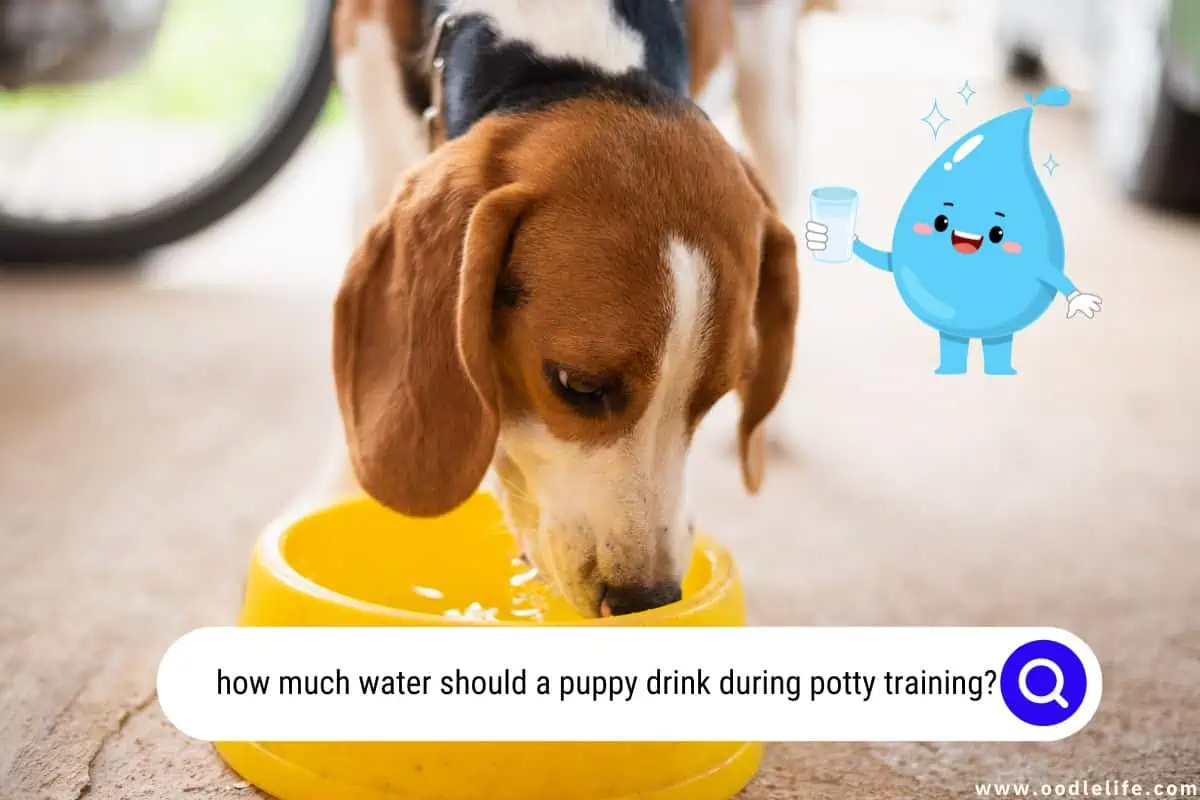
Don’t fret—this article will serve as your guide to achieving that perfect balance. We’ll break down how much water your puppy needs during potty training and how to manage their intake effectively.
Understanding Puppy Water Needs
When it comes to potty training, understanding your puppy’s water needs is crucial. Puppies, like all living beings, need water to stay healthy and hydrated. However, the exact amount of water a puppy requires depends on factors such as age, size, and overall health.
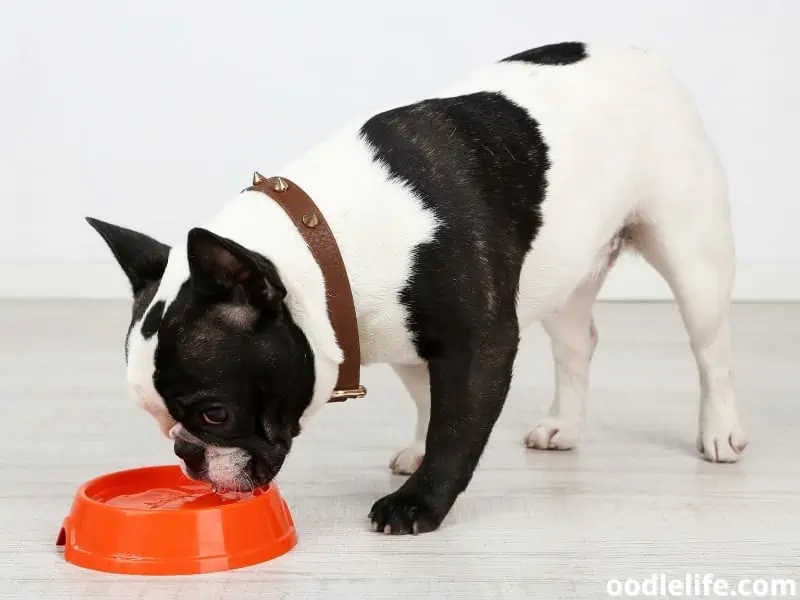
For example, a two-month-old Golden Retriever puppy will have different water needs than a one-year-old Chihuahua. As a general rule of thumb, puppies should drink approximately 1 ounce of water per pound of body weight each day. That means if your little fluff ball weighs 10 pounds, they should be drinking about 10 ounces of water daily.
Keep in mind that as your puppy grows, their water needs will change. During hot or humid days, they will require more water to stay cool and hydrated, whereas in cold weather, their water intake may decrease slightly. It’s essential always to provide fresh, clean water for your puppy and monitor for any changes in their drinking habits.
Remember, a well-hydrated puppy is a happy puppy. You don’t want your furry friend to turn into a cranky little raisin, do you?
When potty training, it can be helpful to establish a consistent water schedule to make it easier for both you and your puppy. For instance, you can offer water after mealtimes and playtime, removing the water dish an hour or so before bedtime to reduce those midnight potty breaks.
Just like humans, every puppy is unique. As you embark on this potty training journey, pay close attention to your pup’s specific needs and adjust their water intake accordingly. And remember to keep your sense of humor as you navigate through the ups and downs of puppy parenthood!
Potty Training and Water Intake
When it comes to potty training your puppy, understanding their water intake is essential for success. Maintaining a balance between providing enough hydration and minimizing accidents is crucial for both the puppy’s health and your sanity.
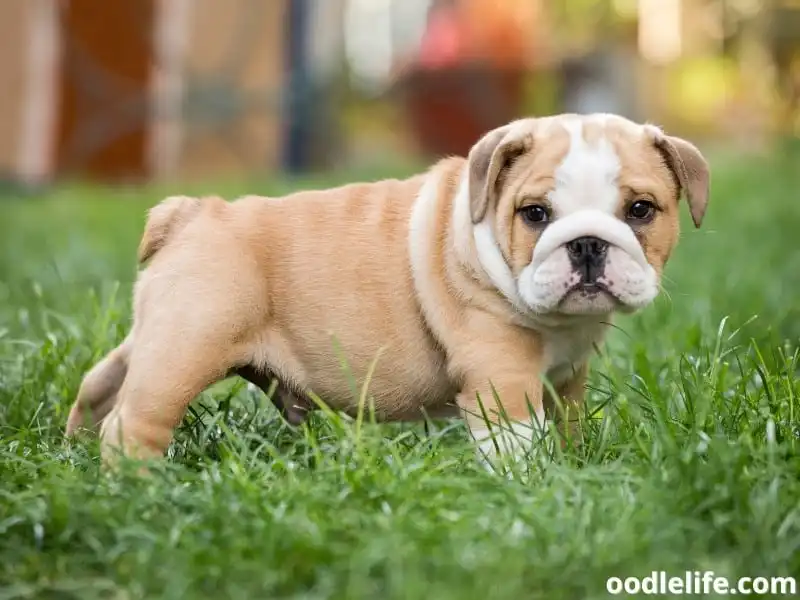
So, how much water should a puppy drink during potty training? In general, puppies need about one ounce of water per pound of body weight per day. For example, if you have a 10-pound puppy, it should consume roughly 10 ounces of water daily.
Of course, this is just an estimate, and factors like age, activity level, and weather can influence your puppy’s water needs.
While keeping track of the water intake during potty training might seem like a chore, it can actually help prevent accidents. By monitoring how much your puppy drinks, you can anticipate when they might need to go potty and take them outside accordingly. But keep in mind, young puppies have smaller bladders, so be prepared for frequent trips outdoors!
During potty training, it’s important to establish a routine for your puppy – including scheduled water breaks. Although it may be tempting to limit water access in an attempt to reduce accidents, doing so can be detrimental to your pup’s health. Instead, try offering water during specific times of the day, such as mealtime and after playtime, to help build a consistent potty schedule.
Remember, consistency is key! Sticking to the routine will help your puppy navigate the potty training process, and you’ll be celebrating accident-free days in no time.
Lastly, a quick tip to keep in mind: puppies, much like humans, can be deterred from drinking too much water right before bedtime. So, to help reduce the risk of late-night accidents, consider removing your puppy’s water bowl about an hour before turning in for the night.
Potty training might seem like an uphill battle at times, but armed with knowledge about your puppy’s water intake, you’ll be well-equipped to tackle the challenge. So, fill up that water bowl and happy training!
Factors Affecting Water Consumption
There are several factors that can affect your puppy’s water consumption during potty training. Let’s explore some of the common ones.
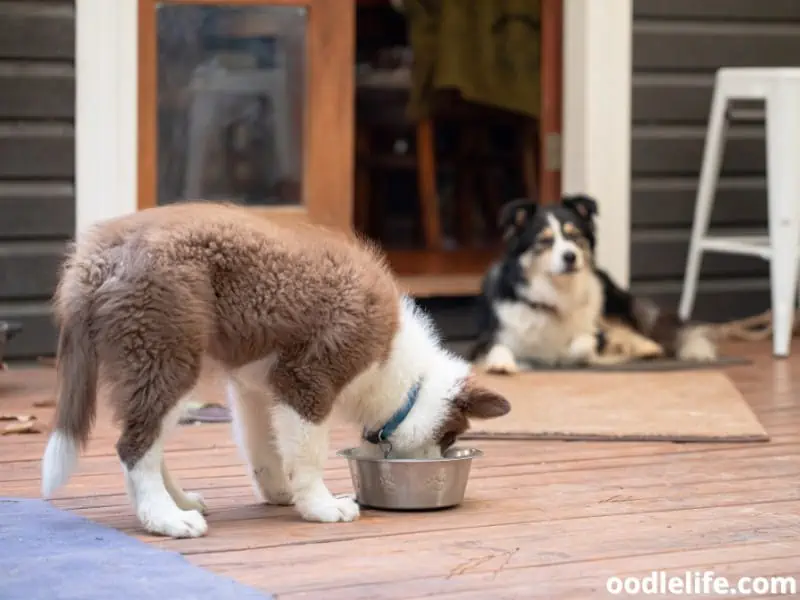
First, age plays a significant role in how much water your puppy needs. Younger puppies generally need more water than older ones because their bodies are growing rapidly. You could say that their water requirement is directly proportional to their cuteness factor, but that’s not very scientific.
Size is another important factor. A big, huggable Newfoundland is bound to drink more water than a petite Chihuahua simply because of their difference in body mass. It’s like comparing a sports car to a truck – both need fuel, but in different amounts.
When it comes to puppy food, wet food contains more water than dry kibble, so your puppy might need less water if they’re mainly eating wet food. However, don’t let them trick you into thinking that they don’t need any water at all just because they’re getting soupy meals. It’s like humans trying to survive on soup alone – we’d still need water sometimes!
In potty training, extra treats can influence water consumption too. If you’re giving your pup a bunch of salty or dry treats, they may become thirstier than usual, causing them to drink more water. Think of it like people binge-watching their favorite show with a bucket of popcorn – can you resist the need for a drink?
If you’re using a crate during potty training, ensure your pup has access to clean water inside their crate. Puppies shouldn’t hold their thirst for long periods. It’s like being stuck in a long meeting without a water bottle – not very comfortable, right?
Finally, environmental factors like heat can also affect how much water a puppy needs. Just like humans tend to drink more water on a hot summer day, your cuddly friend will also need to quench their thirst more often in warm weather. Keep an eye on them, and you’ll soon become their favorite water dispenser.
These are some of the factors affecting your puppy’s water consumption during potty training. Remember, they depend on you to provide them with clean water and a comfortable environment, so always keep their needs in mind as you embark on this potty-training adventure together.
How to Monitor and Assess Hydration?
Monitoring and assessing your puppy’s hydration is essential during potty training, as it helps you ensure they are staying healthy and consuming the right amount of water. Keep an eye on their water intake and look for signs of dehydration.
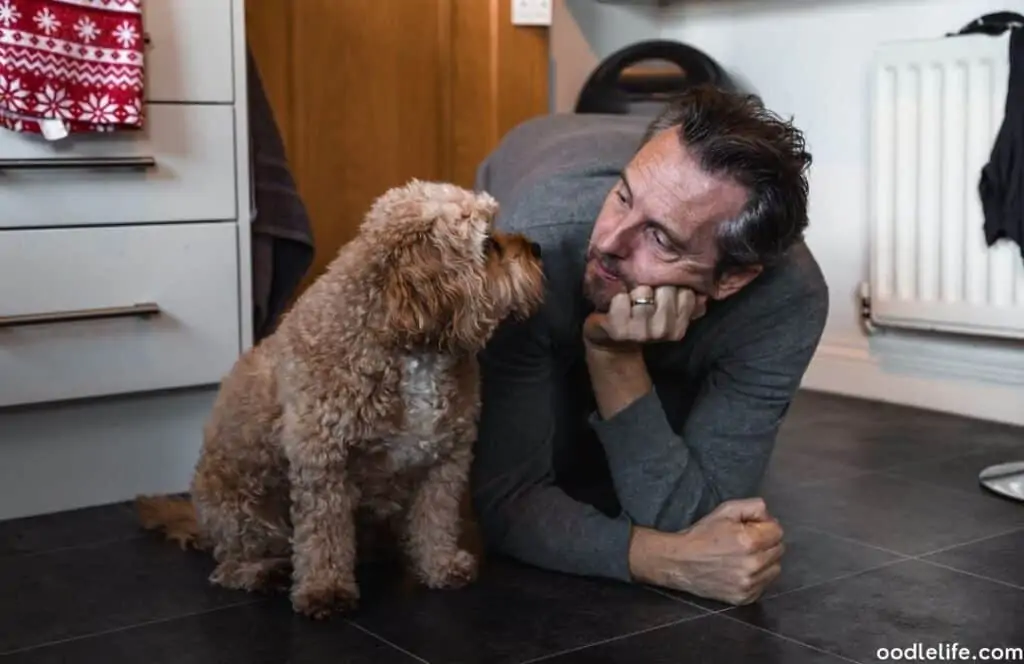
One simple test to check for dehydration in your puppy is the skin elasticity test. Gently pinch their skin between your fingers and then release it. If the skin returns to its normal position quickly, your puppy is likely well-hydrated.
If it takes longer to snap back, your puppy may be dehydrated.
Another method to assess hydration is to examine your puppy’s gums. Healthy, hydrated pups will have moist, pink gums. If the gums are pale or sticky, your furry friend may need more water.
During potty training, it’s a good idea to keep track of how often your puppy urinates, as well as the color and consistency of the urine. Clear or light yellow urine usually indicates proper hydration, whereas dark yellow or amber-colored urine may signal dehydration.
Remember, puppies can be like little water balloons – they can go from fully hydrated to dehydrated quite quickly. Make sure you provide them with continual access to fresh, clean water, and monitor their drinking habits to ensure they’re staying happy and hydrated.
In case you notice any signs of dehydration or abnormalities in your puppy’s behavior, consult your veterinarian for guidance on adjusting water intake and ruling out any potential health issues.
Stay confident and knowledgeable in this process, and with a little neutral, clear guidance, you and your puppy will be a well-hydrated, potty-trained team in no time!
Ensuring Access to Clean Water
During potty training, it’s essential to provide clean and fresh water for your puppy. Hydration is crucial for all dogs, but it’s especially important for puppies as their bodies are still growing and developing. To ensure your puppy gets the water intake they need and maintain good health, let’s discuss how to provide them access to clean water.
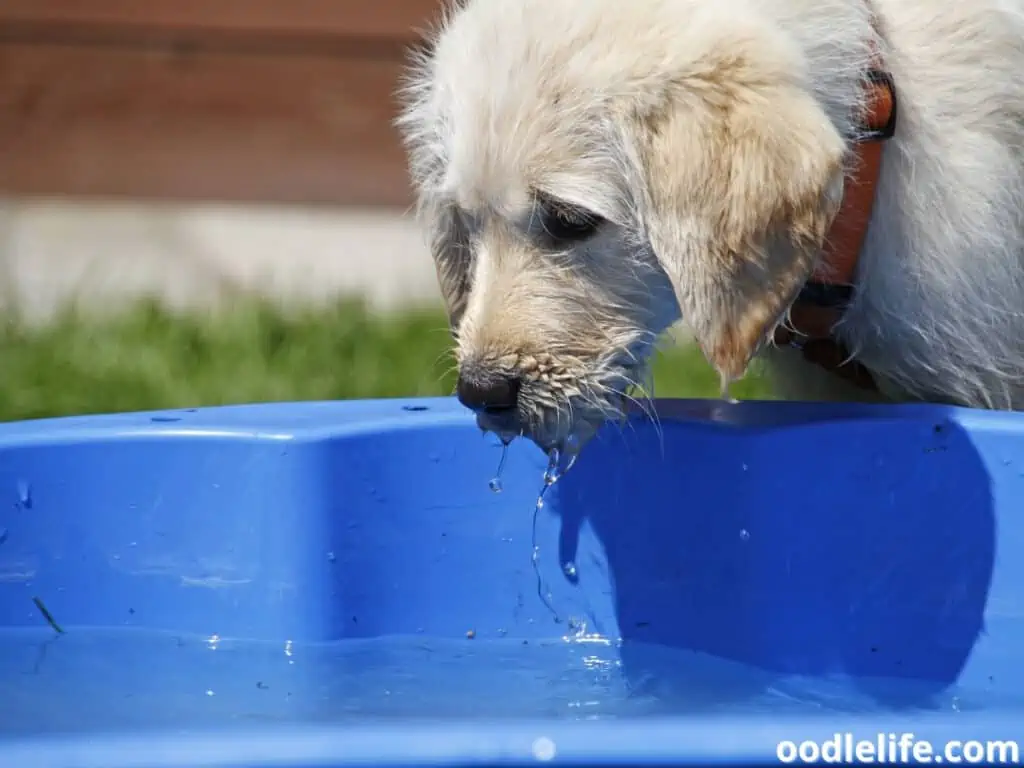
First, choose an appropriate water bowl for your furry friend. Select a size that’s easy for your puppy to access and can hold enough water for their daily consumption. A shallow bowl may be best for smaller breeds, while larger ones may require a deeper dish.
Remember to place the water bowl in a consistent location, so your pup can quickly find it when they need a drink.
It’s crucial to keep the water in the bowl clean and fresh throughout the day. Wash the bowl regularly with mild soap and hot water to prevent bacteria growth. By doing so, you’ll make sure your puppy stays healthy and avoids any unwanted stomach issues.
Fill the water bowl with fresh water at least a couple of times a day. This will ensure your pup has a steady supply to drink from. You might notice that your puppy drinks more or less depending on various factors like exercise, diet, and weather.
Keeping an eye on their individual habits will help you adapt to their specific needs.
Maintaining clean water during potty training can also have some unexpected benefits. For example, offering fresh water consistently might make your puppy less likely to drink from other questionable sources, such as puddles or toilet bowls (talk about a dirty habit!). In turn, this helps reinforce healthy behaviors while ensuring your puppy stays hydrated and, most importantly, happy!
So, remember to keep the water flowing, and watch your pup grow up strong, healthy, and well-potty-trained. And who knows? With a keen eye on their hydration, you might just become your puppy’s favorite watering hole provider!
Creating a Balanced Drinking Schedule
Establishing a balanced drinking schedule for your puppy during potty training is essential for their health and your peace of mind. While it’s important to ensure your furry friend stays hydrated, you also want to avoid overdoing it, as it could make potty training more challenging.
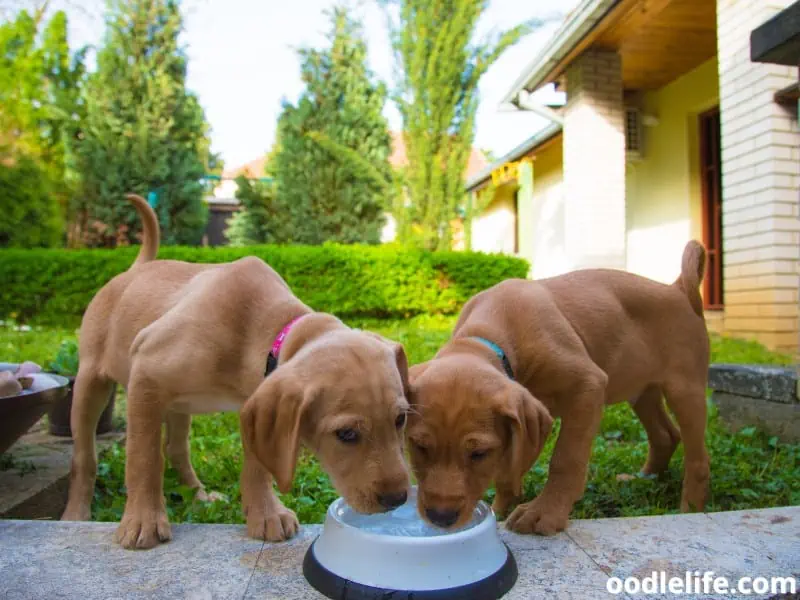
To start with, it’s crucial to know that a puppy’s water intake may vary depending on factors such as their size, activity level, and even the weather. However, a general guideline suggests that puppies should drink approximately 1 ounce of water per pound of body weight each day.
Now let’s create that balanced drinking routine. Begin by providing your puppy with water during regular meal times and spreading it out through the course of the day. For instance, you could offer them water in the morning, at lunchtime, in the afternoon, and during dinner.
Providing a consistent water routine can minimize the risk of accidents, as your puppy will learn when to expect water and anticipate potty breaks accordingly.
Monitor your pup’s water consumption to ensure they’re staying hydrated but not overdoing it. Be mindful of any changes in their drinking habits that may indicate a health issue and consult your veterinarian if you have concerns.
It’s also essential to withhold water in the evening before bedtime, usually about an hour or two before, as this will help reduce the chances of nighttime accidents. But don’t worry; this won’t harm your puppy—after all, you probably don’t sip on water throughout the night either!
Remember to make things fun and interesting during potty training. Include a bit of playtime after successful potty sessions as a reward for your puppy’s cooperation. Keep your tone of voice confident, knowledgeable, and clear, so your puppy knows you mean business.
Creating a balanced drinking schedule is just one aspect of potty training, but it’s an important one. With consistency, patience, and a touch of humor, you and your puppy will navigate this milestone with ease.
Overhydration and Risks
We all know the importance of keeping our fur babies hydrated, especially during potty training. However, it’s crucial not to overlook the risks of overhydration, which can be just as harmful as dehydration.
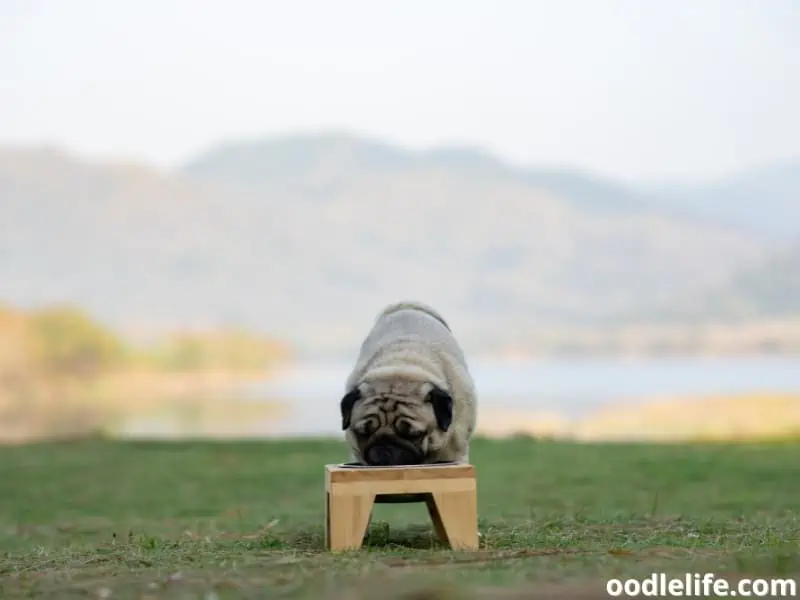
Overhydration, also known as water intoxication, occurs when a puppy drinks too much water, which dilutes their blood. This can lead to a potentially dangerous condition called hyponatremia, where sodium levels in the blood become too low.
Picture this: you’re dissolving a pinch of salt in a glass of water, but keep adding more and more water until there’s barely any salt left.
That’s what’s happening in your pup’s bloodstream!
Now, our puppies are smart little creatures, but they haven’t mastered moderation yet. During potty training, they might mistake the water bowl for an all-you-can-drink buffet and guzzle down excessive amounts of water. This can lead to frequent peeing, making their housetraining feel like a never-ending challenge.
Too much water intake can also put extra stress on their kidneys, and in extreme cases, lead to life-threatening health problems. So how can we strike the perfect balance between keeping them hydrated and preventing overhydration? A general rule of thumb is to provide about one ounce of water per pound of body weight per day.
Pay attention to your pup’s thirst cues and adjust water intake accordingly. You may also want to consider monitoring the color of their urine – a light yellow color is the goal. If it’s clear like water, they’re likely drinking too much.
To keep it light-hearted, think about potty training as a dance, and you’re teaching your pup the steps. You don’t want to flood the dance floor (literally), but make sure there’s enough water for everyone to take a refreshing sip throughout the session.
Remember, balance is key when it comes to hydration during potty training. Stay vigilant about your puppy’s water intake, and soon, you’ll have a perfectly potty-trained pup who’s ready to conquer the world (or at least your neighborhood).
Recognizing and Addressing Dehydration
Dehydration is a serious concern for puppies, especially during the potty training process. It’s crucial for pet owners to recognize the signs of dehydration and take appropriate measures to maintain their pup’s health.
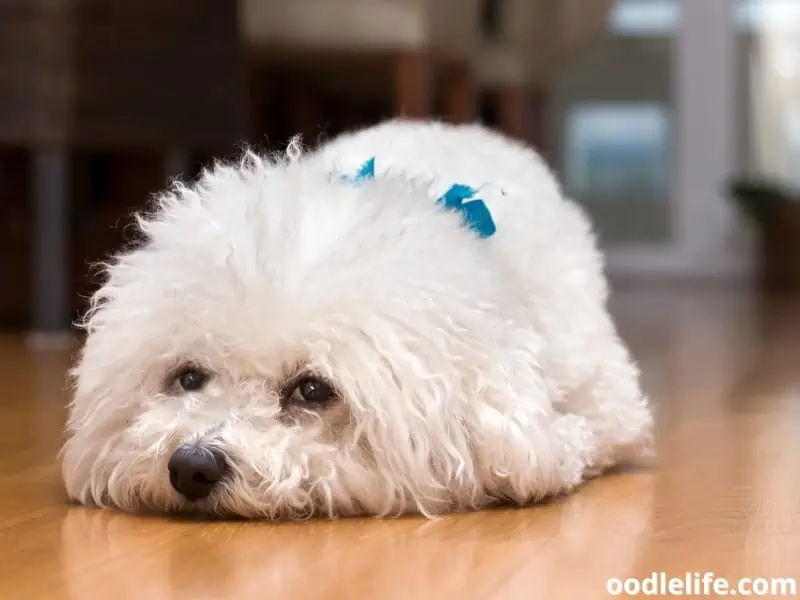
One common sign of dehydration in puppies is sunken eyes and a lack of energy. If your puppy seems lethargic and isn’t as playful as they usually are, it might be time to check their water intake. Another red flag is a dry or tacky-feeling mouth, suggesting that your little one isn’t getting enough fluids.
Keep an eye on their urine: dark yellow to orange color and strong smell indicates dehydration.
Ensuring your pup gets enough water during potty training is essential for their overall health and bladder function. Puppies need to drink one ounce of water per pound of body weight per day. For example, if your puppy weighs 10 pounds, they should drink at least 10 ounces of water daily.
Keep their water bowl clean and filled at all times, and remind your furry friend to take breaks for a drink during playtime.
In some cases, dehydration can be an early sign of other health issues, such as diabetes or kidney failure. Both conditions can lead to excessive urination, making it difficult for your puppy to stay hydrated. It’s important to consult a veterinarian if you notice persistent signs of dehydration or suspect diabetes or kidney failure.
Be aware of your puppy’s medications, too, as some can cause dehydration as a side effect. If your pup is on medication, ensure they get enough water and ask your vet for advice on managing the dehydration risk.
Remember, a well-hydrated puppy is a happy and healthy puppy!
House-Training Techniques
During potty training, it’s essential to set up a routine for your puppy, which includes meals, playtime, and naps. This will help them understand when it’s time for bathroom breaks and make potty training more manageable.
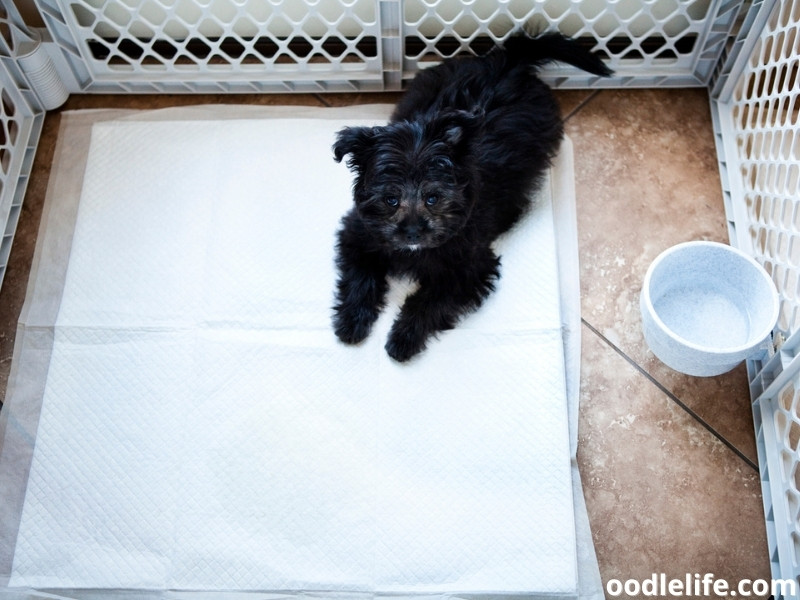
Start by introducing puppy pads or a designated potty spot in your home. This area should be easily accessible, and you should always bring your puppy here after meals, playtime, and naps. Use positive reinforcement like treats and praise to encourage your pup when they go potty in the right place.
Crate training can also be an effective method for house-training your puppy. The crate should be a cozy, inviting space where your puppy feels comfortable. It’s essential to create a positive association with the crate, so never use it as a place for punishment.
Remember to keep the crate clean; this will encourage your pup to keep it tidy too!
When it comes to feeding your puppy, establish set meal times and avoid free-feeding (leaving food out all day). This helps regulate their bathroom habits and gives you more control over when they need to go. About 15-30 minutes after a meal, take your pup to their designated potty spot or pad.
Keep an eye on your puppy’s water intake during potty training. While it’s essential to provide fresh water, monitoring their consumption helps predict when they might need a bathroom break. Young puppies are more prone to gulp down water enthusiastically, particularly after playtime, so ensure they take a trip to their potty spot soon after.
Lastly, accidents will happen. Don’t forget to be patient and consistent with your training! Instead of punishing, simply clean up the mess with an enzyme-based cleaner to remove any lingering smells that might attract them back to the same spot.
With the right approach and plenty of encouragement, your puppy will soon be on their way to becoming house-trained.